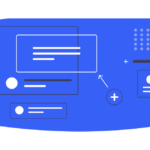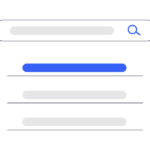Prioritizing Website Functionality Without Making Everyone Hate You
“The difference between successful people and really successful people is that really successful people say no to almost everything.” —Warren Buffett
So you’re in the middle of a website project (or you’re about to be) and it hits you: pulling this thing off without a hitch and keeping everyone happy is going to be really hard.
Your boss and the board have high expectations for the new website (they’ve given you a lot of money for it, after all). Staff members have been waiting for years to FINALLY overhaul things so the 5,178 annoyances that make their day-to-day work difficult can be fixed. The stakes are high.
And now that you’re in the weeds, this is getting a lot more complicated than you thought. The requests are pouring in from the top, bottom, left, and right. Your list of to-do items is growing…but your budget sure isn’t.
You want to make your staff, boss, and board happy, but not everyone can get what they want. So how do you successfully navigate this process to ensure your website project is a success AND avoid getting death threats from your staff or being fired?
Here’s where most people go wrong
As the founder of Brooks Digital, I get the privilege of coaching people who work at nonprofits through the website redesign process.
Over time, I’ve observed that the stress, anxiety, and exhaustion of managing a website project primarily comes from two sources:
- Taking the typical approach to website redesigns which has more or less remained unchanged for the last 15 years.
- A lack of clarity, alignment, and leadership around what outcomes the website should produce for the organization.
In other words, if you can’t clearly articulate the value your website produces and generally don’t touch it aside from a major redesign project every 5-7 years, you are a prime candidate for STRESS.
Often, I find what these folks need (and what I would hazard that YOU need) is someone who can explain, in their own language, a different way of thinking about their website that makes the process less stressful and helps them think more clearly about what they really need.
So let’s dive into some tools, mindsets, and approaches you can use to prioritize the different pieces of your website’s functionality without making everyone hate your guts.
Saying “no” without upsetting people
Many website projects live in a murky land of opinion and ego-driven decisions:
- You say yes to your boss because she’s adamant about something being included (and, you know, she’s funding the project).
- You say yes to Mary in development because there’s only so many times you can say no before you just look mean.
- You say yes to a program person because they’ve been slaving away for so many years and this one feature would REALLY improve their quality of life.
It’s a game of people-pleasing and politics that leads you to say yes, yes, yes, one too many times. In your heart, you know that it would be better for the project if you said NO. But you’re trying to keep people happy.
Now, I want you to keep your people happy. That’s good for everyone. But what we’re shooting for is a way to say “uh…no freaking way!” without people getting upset.
Because let’s be clear:
Saying NO is what will make your project a success.
Your people will push, politick, and fight for what’s important to them. You want this. Engaged project members are going to make your project successful because they care deeply about the outcome.
Your job is to steer the ship—the collective project with its unique participants—to its intended destination.
But the problem is…most website projects are more like rowboats jammed with 50 people rowing in 12 different directions.
When you’re lost at sea, use your compass
So how do you get everyone rowing in the same direction?
That’s where you come in, captain. (Except you don’t get a cool hat. Sorry.)
You get everyone in alignment by finding and sharing the project’s “true north.” This is the vision for your ideal website, the 10,000-foot view, the reason your website exists.
Listen, I’m not trying to bizsplain this to you. I know this is not an earth-shatteringly new concept. If you are leading a website project, you are a smart, capable person. And my goal is to help you clearly connect how applying this concept on a practical level will practically improve the experience of your website project as a whole.
Okay, back to vision statements. It doesn’t have to be fancy. Here is an example (with permission) from Options Community Services, one of our clients:
The Options website is useful to clients, informative & persuasive for the curious public, and useful for staff.
See? That’s not so bad.
But just in case you need extra help to start writing your vision, here are 3 truth bombs for you:
1) The details of the vision are far less important than the fact it simply exists.
You will get 80% of the benefit by simply writing your vision down and using it as a mechanism to focus the project. So just start by getting your vision down on paper.
2) A good vision statement does not dictate what gets built, but what your priorities are.
Remember: this is not a features list. It’s a benefits list. An outcomes list.
3) Your vision is what allows you to diplomatically say “no” to the requests that are well-intentioned but don’t wholeheartedly drive your project to its better tomorrow.
Finally, you have a good reason to say NO.
But writing the vision down only half the battle.
The other half is getting your staff, boss and board on board (har har) and in agreement with this vision.
When you do this, you will start to see two things happen:
- When everyone is on the same page with the vision, people will start to orient their ideas around the vision. Your people will start saying “no” to their own requests for you! (I heard that audible sigh of relief all the way over here.)
- When something does come up that’s not in alignment with the vision, you have the leverage to push back—or at least start a productive conversation on how that particular idea aligns with the vision. You might be surprised at some of the different perspectives people bring to the table that you didn’t consider.
So how do you get people on board? Well, I can’t tell you the best way to lead your people, but here are some ideas:
- Call a meeting to paint the vision—your better tomorrow—in bright detail and get input from staff and stakeholders. Revise and share until everyone is on the same page.
- Post the website vision on the office wall or whiteboard.
- Read it at the beginning of every project meeting.
- Rate every feature on a scale of 1-10 in terms of how much closer it gets you to your vision.
Once you have your vision on paper, shared, and used, it’s going to elevate you past the opinion-driven-decision stage that plagues so many projects. You will be able to say “no.”
And that, my friend, is going to make your life a lot easier and your project more successful.
Getting the overwhelm under control
So you have the tools and tactics to effectively say “no” without upsetting people. But the fact still remains that you have to make a LOT of decisions…and there’s a lot riding on you to make the right ones.
Because let’s face it:
This is your one chance to get it right…right?
You’re under the gun because you’re calling the shots on an expensive project that will be in place for years to come. Everyone will have to live with your decisions.
Here’s what I want you to hear:
You don’t have to do it all at once.
A website is a living, breathing organism. You can push updates in an instant. You don’t have to get everything right the first time. (In fact, you CAN’T get everything right the first time, no matter how hard you try. Unless you have a crystal ball. In which case, please send it to me.)
So we’re going to reframe what a website launch actually means. You are only allowed to launch with the things you absolutely must have. You can add everything else later.
This doesn’t mean launching with a barebones or poor quality website. It does mean having the discipline and conviction to pinpoint which website features are essential to your vision and prioritizing those over everything else.
Okay, just hear me out for a second:
- I know you want to impress everyone with your hard work.
- I know it’s taken you YEARS of begging, convincing and playing office politics to get to this point.
- I know your old site was such a frustrating eyesore that you need this new site to be the polar opposite of whatever that thing was.
But if you delay your website launch to work on anything that is, by definition, non-essential, you are adding more stress and complexity to your project and wasting the opportunity to put your new website immediately to work so you can reap the benefits.
Because here’s the truth: a website is not a one-time project. You can launch it and follow up with those awesome new features literally in a few weeks or months if you want.
Yes, that has implications on how you fund, budget, and staff around your website. But if you want to slash the stress, pressure, demands, and risk of your website project, it’s time to abandon the age-old mantra of “well, we’ve always done it this way.”
Wrangling your wish list and making your people feel heard
If you’re with me so far, you know our goals are to:
- Stop trying to do everything all at once.
- Start saying “no” a lot more—but without hurting other people’s feelings.
Part of this process is making people feel heard. This is where your soft skills come in. You need to say “no,” but you also need people to feel safe. Otherwise, their best ideas will stay locked in their head.
So here’s what we’re going to do:
When you’re planning the project, let everyone get their ideas down. We need them to feel heard, remember? Add all their ideas to the whiteboard, sticky notes, index cards, whatever. Everything is fair game. This is the big wish list.
And chances are, they’re all good ideas—you just don’t have the time or budget to do everything now.
So how are you going to decide what to work on?
Based on your vision, we’ll start by grouping items into two piles: “must have for launch” and “later.”
“Later” is a more diplomatic way of delivering the immediate “no” (which you need to do to keep your project on track).
It’s a great way to ensure people’s ideas are heard and valued. Most of your staff are going to understand you can’t do everything right away—they just want to have their voice in the mix and know their idea is somewhere in the plan.
Keep in mind that a broad set of requirements (e.g. an event calendar) may be a must-have, but there are pieces that may fall into the “later” bucket (for example, users must have a button to add an event to their calendar, but later could have the ability to cancel their own event registration through the website).
And just like that, you have a smaller, sensible list of features for your website launch that you’ve vetted against your most important goals. It’s less stressful. It’s less expensive. And it’s actually manageable.
And once your website is launched, you can go back and repeat the process to identify the next batch of features you’d like to release in order to deliver incremental value to your online audience.
The alternative is that you have to delicately balance staff morale by playing the bad guy in order to launch a big, expensive project that takes weeks or months longer to build because it contains features that are not necessary to launch with.
Which approach better serves your organization, staff, constituents, and YOU?







